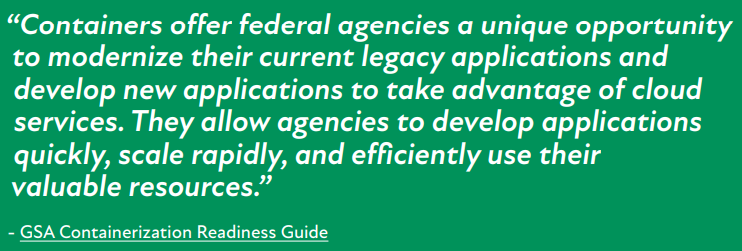Agencies are actively seeking ways to improve the quality of services they provide to both employees and constituents.
Unfortunately, they’re facing several roadblocks to achieving higher levels of flexibility, modernization and cost savings. Enter containerization, one of the latest developments in the evolution of cloud computing. But first, let’s discuss what challenges that agencies are dealing with that containerization can help them overcome:
Silos: As agencies embrace the cloud, it’s easier than ever to spin up solutions, many of which are redundant. Silos like these can significantly impact cost, productivity and innovation.
Cloud Modernization: When agencies begin moving to the cloud, they have to decide what will be modernized and what has to go. It’s a time-consuming and complicated process.
Mounting Complexity: Even applications that work seamlessly in a managed environment can quickly become bulky or unresponsive when they must scale significantly. Sometimes fixing the scalability issue means reworking the application completely.
So how does containerization play a role in tackling these challenges?
Greater efficiency, consistency, security, portability and scalability make containers a viable answer for agencies. Containerization allows developers to create and deploy applications faster and more securely, since the “container” stands apart from the operating system and is able to run across any platform or cloud. Security is also one of the biggest drivers to make the switch, as 46% of both government agencies and the private sector say they use containerization to protect their network.
Discover why containerization is becoming a go-to solution for many organizations and how you can practically apply it in your agency with this report. You’ll also read up on how the Federal Laboratory Consortium for Technology Transfer has applied containerization at their agency to upgrade their computer systems.






Leave a Reply
You must be logged in to post a comment.